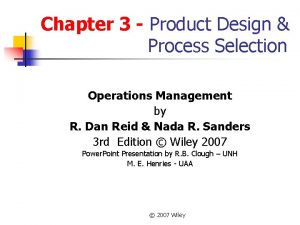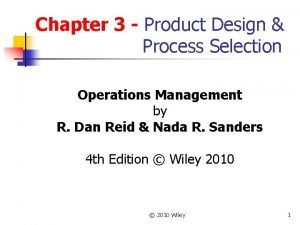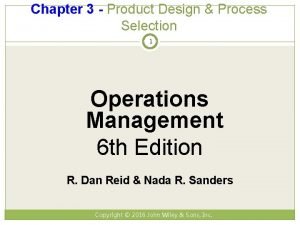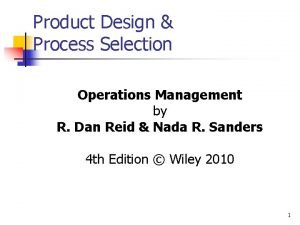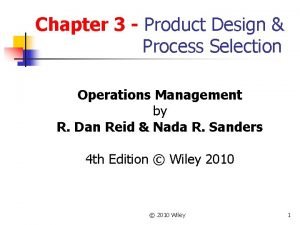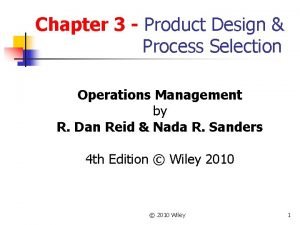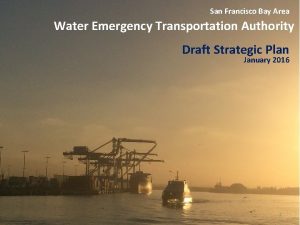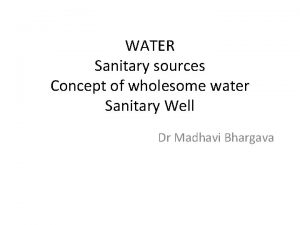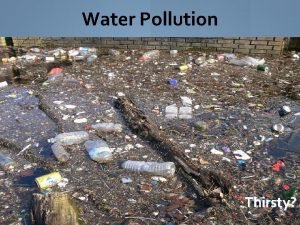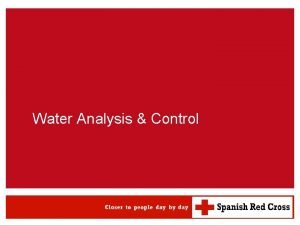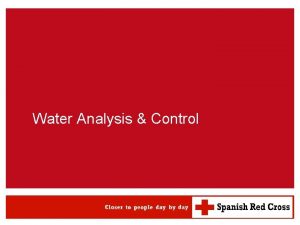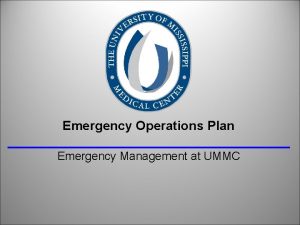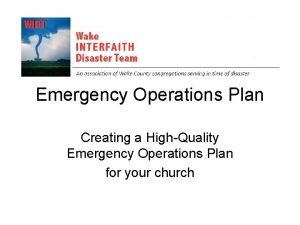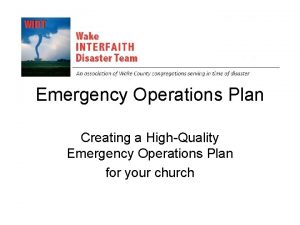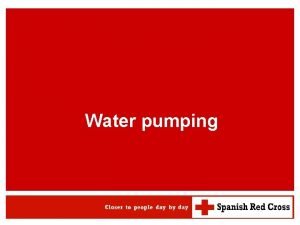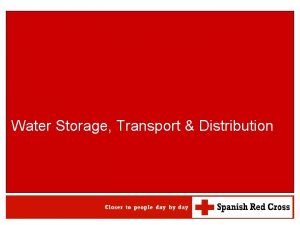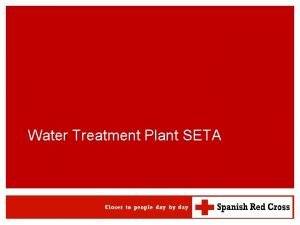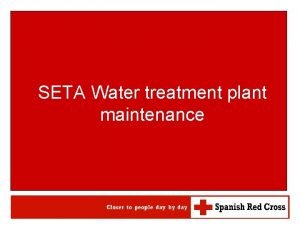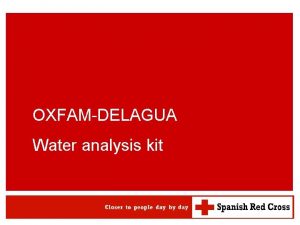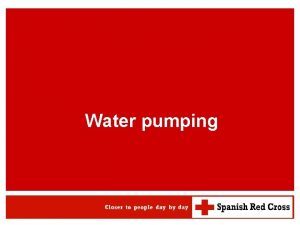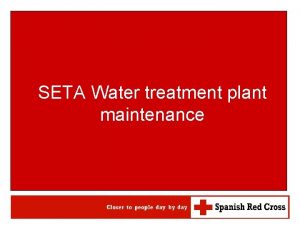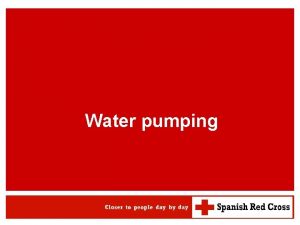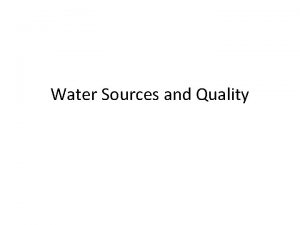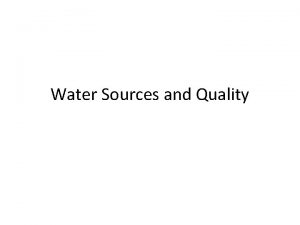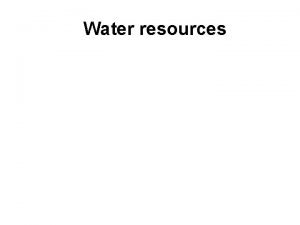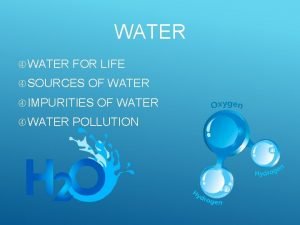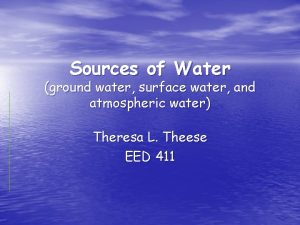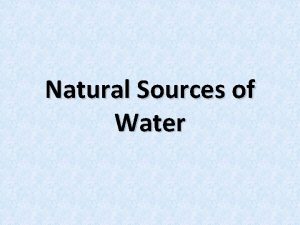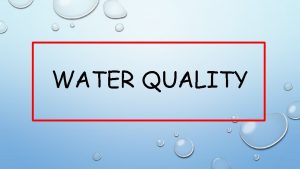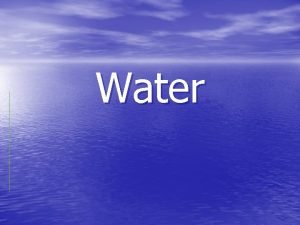Selection of Water Sources in Emergency Operations WATSAN
























- Slides: 24

Selection of Water Sources in Emergency Operations

WATSAN M 15 ERU Selection of water sources in emergency operations Contents 1. Why water supply selection? 2. Availability of resources. 3. Technical criteria. 4. Steps to select a water source 2

WATSAN M 15 ERU 1. Why Water Source Selection? Selection of water sources in emergency operations 3

WATSAN M 15 ERU Selection of water sources in emergency operations 1. Why Water Source Selection? • • Quantity Quality Access Distribution Safety Camp Site Local Communities / Local Government ONCE DECIDED IT IS VERY DIFFICULT TO CHANGE 4

WATSAN M 15 ERU 2. Availability of Resources Selection of water sources in emergency operations 5

WATSAN M 15 ERU 2. Availability of Resources • SURFACE WATER – Lakes – Rivers • GROUNDWATER – Wells – Boreholes – Springs • RAIN WATER Selection of water sources in emergency operations 6

WATSAN M 15 ERU Selection of water sources in emergency operations Humanitarian Hydrology 3. Technical Criteria Accessibility 7

WATSAN M 15 ERU 4. Technical Criteria • Type of emergency • Needs of affected population • SPHERE WATSAN indicators Selection of water sources in emergency operations Humanitarian 8

WATSAN M 15 ERU Selection of water sources in emergency operations 4. Technical Criteria Humanitarian Natural causes Human causes -droughts -floods -huricanes -earthquakes -volcanic activity -wars -accidents -famine Disasters EMERGENCY 9

WATSAN M 15 ERU 4. Technical Criteria Selection of water sources in emergency operations Humanitarian Needs of affected population The amount of water supplied to the population might vary according to climatological, hydrological and geographical conditions as well as the habits of the population. Mínimum: 15 litres of water per day person (Sphere) 10

WATSAN M 15 ERU Selection of water sources in emergency operations 4. Technical Criteria 11 Humanitarian Sphere Water Minimum Standards • Average water use for drinking, cooking and personal hygiene at least 15 l. / person / day • The maximum distance to the nearest water point is 500 metres • Queuing time at a water source no more than 15 minutes • No more than three minutes to fill a 20 -litre container • Appropriate quantities of water are available consistently or on a regular basis • One washing area per 250 people • Septic tanks more than 30 m away from any groundwater source. • Latrines 1. 5 m. above water level • Drainage system in water collection points

WATSAN M 15 ERU Selection of water sources in emergency operations 4. Technical Criteria • AVAILABILITY OF WATER SOURCES • QUALITY – WORLD HEALTH ORGANISATION (WHO) – GOVERMENT REGULATIONS • QUANTITY – Current needs – Forecasted needs • RAIN WATER DRAINAGE Hydrology 12

WATSAN M 15 ERU 4. Technical Criteria Selection of water sources in emergency operations Accessibility • Access to the water source (ERT) • Access to water distribution points (Beneficiaries) All people have safe and equitable access to a sufficient quantity of water for drinking, cooking and personal and domestic hygiene. Public water points are sufficiently close to households to enable use of the minimum water requirement 13

WATSAN M 15 ERU Selection of water sources in emergency operations 14 a. - Compilation of information b. - Selection of survey areas 4. Steps to select a water source c. - Field survey and completion of forms d. - Public bodies / NGOs / Beneficiaries e. - Selection of water source & camp site

WATSAN M 15 ERU Selection of water sources in emergency operations 5. Steps to Select a Water Source a. - Compilation of information q WHAT? – Maps (Hydrological, topographic, infrastructures-water supply, etc) – Reports (Government, Red Cross (FACT) , NGOs) – Aerial photographs q WHERE? • • IFRC ICRC Local Chapter / Branch Central Government Local Government NGOs Local Population Internet 15

WATSAN M 15 ERU 5. Steps to Select a Water Source b. - Selection of survey areas Selection of water sources in emergency operations 16

WATSAN M 15 ERU Selection of water sources in emergency operations 5. Steps to Select a Water Source c. - Field survey – Individual basic equipment • Maps, compass, GPS – Water analysis • Conductivity meter • p. H meter • Turbidíty meter • Nitates • Nitrites • Delagua kit • Hardness Searching for a water source & a site camp 17

WATSAN M 15 ERU 5. Steps to Select a Water Source c. - Field survey Water analysis Selection of water sources in emergency operations 18

WATSAN M 15 ERU 5. Steps to Select a Water Source c. - Field survey Completion of assessment forms Selection of water sources in emergency operations 19

WATSAN M 15 ERU Selection of water sources in emergency operations 5. Steps to Select a Water Source c. - Field survey Water source Nº: _______ Date: _________ Type of source (River, stream, canal, well, borehole, etc) Current uses of the water source Current uses of water upstream or above the source Current quantity of flow Colour and odder of water FIELD LOG BOOK Physical characteristics of water sources Is the water source seasonal? Specify the periods when flow is higher and lower Average waking distance to households Are the surroundings used for defecation? Type of surrounding vegetation Type of surrounding fauna 20

WATSAN M 15 ERU Selection of water sources in emergency operations 5. Steps to Select a Water Source c. - Field survey FIELD LOG BOOK Analysis of water sources Date Source Nº Coeliforms (Nº x 100 ml) Hardness (mg/l) Conductivity (µS/cm) p. H Nitrates Nitrites Turbidity (mg/l) (NTU) 21

WATSAN M 15 ERU Selection of water sources in emergency operations 5. Steps to Select a Water Source d. - Talks to Local Chapter, Public Bodies, Community Leaders, NGOs 22

WATSAN M 15 ERU Selection of water sources in emergency operations 5. Steps to Select a Water Source e. - Selection of the water source & camp site The Team Leader decides the water source & camp site location based on the analysis of : – – – Reports Maps Field surveys Field Log Book data Talks to Public bodies/NGOs/ Beneficiaries 23

WATSAN M 15 ERU Selection of water sources in emergency operations Thank you………. 24
 Importance of water resource
Importance of water resource Water and water and water water
Water and water and water water Print and web sources
Print and web sources Introduction
Introduction Balancing selection vs stabilizing selection
Balancing selection vs stabilizing selection Artificial selection vs natural selection
Artificial selection vs natural selection K selected
K selected Natural selection vs artificial selection
Natural selection vs artificial selection Difference between continuous and discontinuous variation
Difference between continuous and discontinuous variation Example of stabilizing selection
Example of stabilizing selection Logistic model of population growth
Logistic model of population growth Natural selection vs artificial selection
Natural selection vs artificial selection Two way selection and multiway selection
Two way selection and multiway selection Two way selection and multiway selection in c
Two way selection and multiway selection in c Mass selection and pure line selection
Mass selection and pure line selection Process selection operations management
Process selection operations management Production design in operations management
Production design in operations management Product design and process selection
Product design and process selection Product design and process selection
Product design and process selection Process selection operations management
Process selection operations management Product design and process selection
Product design and process selection Product design in operations management
Product design in operations management Water emergency transportation authority
Water emergency transportation authority Sanitary well definition
Sanitary well definition Point source pollution examples
Point source pollution examples















